Though many Americans are taught to learn all 50 U.S. states at a young age, we know far less about the etymological origins behind each name. While some are inspired by Native American languages and others by natural water sources and rock formations, the naming process behind every state offers a fascinating glimpse into our country’s history and culture.
While some namesakes may be more obvious like that of the state of Washington, the backstory behind state names like Kentucky is steeped in uncertainty. From Alabama to Wyoming, here are 50 eye-opening tales about how each U.S. state earned its name.
Alabama
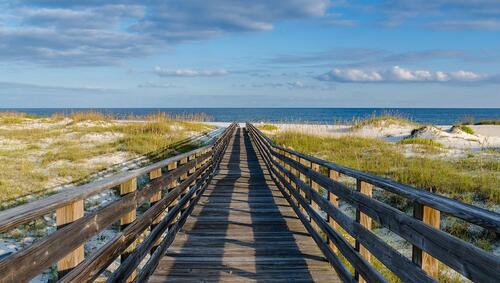
The state of Alabama owes its modern name to Spanish explorer Hernando De Soto, whose 16th-century expedition brought him to the region. There he encountered Native American inhabitants known to De Soto as the Alabamans, who would become the namesake for both the river and the state. The word itself roughly translates to “vegetation gatherers” in the Choctaw language, as Alabama is a combination of the words “alba” meaning vegetation, and “amo” meaning a picker or gatherer. Given Alabama’s lush vegetation — thanks in no small part to its proximity to the Gulf of Mexico and other major rivers — it’s no surprise that the name makes reference to the state’s incredible natural beauty.
Alaska
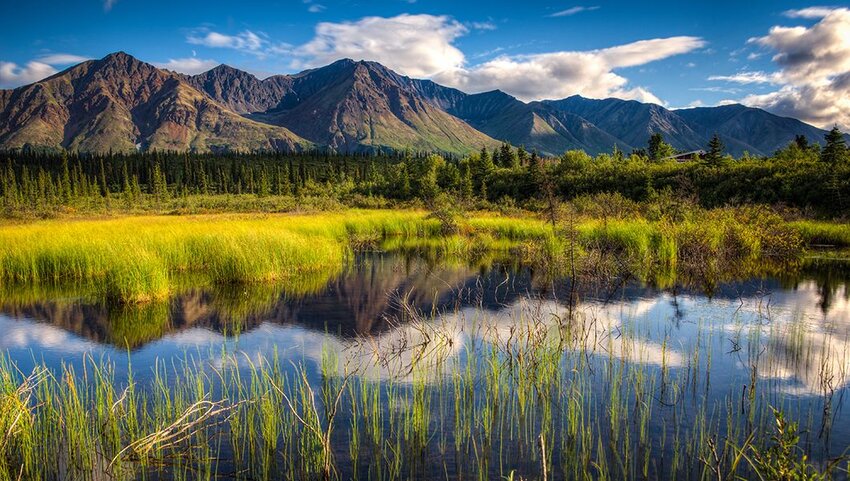
Long before Russian explorers first landed in Alaska in 1741, the native Unangan people of the Aleutian Islands and the Sugpiaq people of the Alaska Peninsula called the region home. Those groups were collectively dubbed as the Aleut by the Russians, and it’s the Aleut language that we have to thank for Alaska’s name. Natives referred to the Alaska Peninsula and mainland as alaxsxag, a word that’s also sometimes spelled as alyeska. That word translates to “great land,” which is perhaps the most appropriate phrase to describe Alaska, as the state’s impressive breadth makes it larger than Texas, California, and Montana combined. This “great land” of the American northwest is also home to the largest national park in the United States, where you can witness Alaska’s ethereal and expansive beauty firsthand.
Arizona
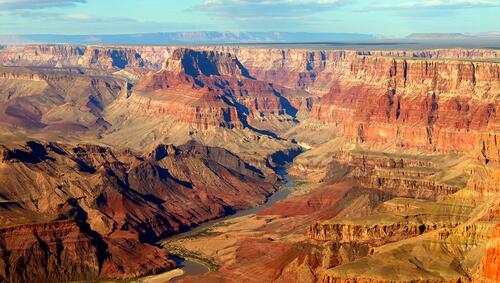
There are competing theories as to how the Grand Canyon State got its name. Some scholars believe it originated with the native Pima people, who called the region Al Shon (meaning “place of little spring”), a term that was later adopted by Spanish explorers as Arizonac. Other historians believe the name originated with explorers from the Spanish Basque region, specifically the phrase artiz onak which translates to “the good oak tree.” The latter theory is especially apt, given Arizona is home to species of oak trees that are native to the Sonoran Desert region. These trees remain leafy for most of the year and add an element of unique natural beauty to the state’s desert environment.
Arkansas
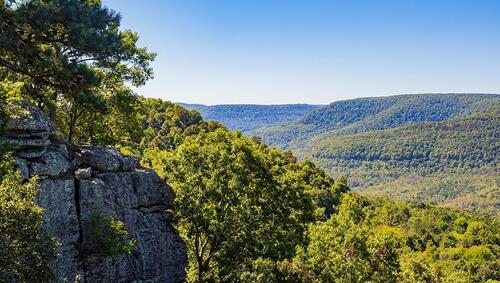
The name Arkansas acknowledges both the original Native American inhabitants as well as the first Europeans to land in the area. The region was once home to the Quapaws, who were referred to as the Arkansas, or “south wind,” by the Alngonquian-speaking Natives of the Ohio Valley. 1673 saw the arrival of French explorers; this group was later honored in 1881, as it was declared the state’s official spelling should be Arkansas (not “Arkansaw”) in a nod to the dialect of those early French explorers. Though French influence later dissipated throughout the region, their legacy remains. The French term “Aux Arc” — which named a 1700s-era trading post — is believed to have inspired the naming of the extraordinary Ozark mountain range in northern Arkansas, which is one of America’s most striking natural wonders.
California
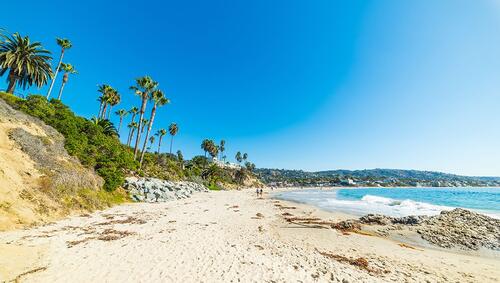
Given its marvelous oceanside location, it’s fitting that California would owe its name to a mythical island from a work of fiction, specifically a romance novel. Spanish author Garci Rodríguez de Montalvo’s 1510 book Las Sergas de Esplandián (“The Adventures of Esplandián”) described an island named California that was filled with gold and ruled by Queen Calafia and other powerful women. Upon arriving on what is now Baja California in 1539, Spanish explorers believed they had stumbled upon this opulent, albeit fictitious land. Though there’s some dispute over this theory, it remains widely accepted. It’s also quite an appropriate hypothesis considering that California’s gorgeous and varied scenery is storybook in nature.
Colorado
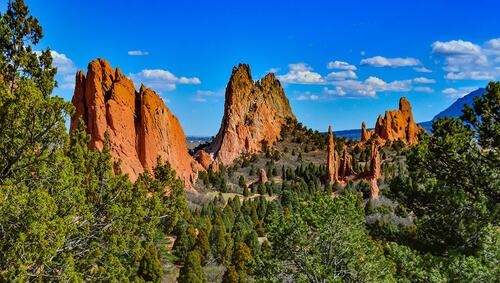
Few concert venues are as spectacular as Colorado’s Red Rocks Amphitheater, but the region’s stunning red rocks have given us more than just a beautiful place to see a show. In fact, the red rocks are responsible for the state’s name, at least according to one theory. The name Colorado undoubtedly comes from the Spanish language word colorado, which translates to the color red. Initially, the prevailing belief was that in the early 16th century, Spanish explorers discovered a red-colored river carrying silt down from the mountains and named it Rio Colorado. However, some state historians believe that the state was actually named after Colorado City, thanks to lobbyists who believed naming the whole territory Colorado would help promote their town. According to one of the founders of Colorado City, they took that name due to the town’s proximity to the region’s alluring red rocks.
Connecticut

Connecticut may be a small state, but it’s also home to part of the longest river in all of New England, that being the Connecticut River. That flowing water source lends its name to the state as a whole, as the river was one called Quinnehtukqut — an Algonquian word that aptly means "long river place” — by the state’s native Mohegan tribe. Connecticut owes both its name and verdant landscape to the serene waters that run through it and add to the calm atmosphere of this quiet northeastern state.
Delaware
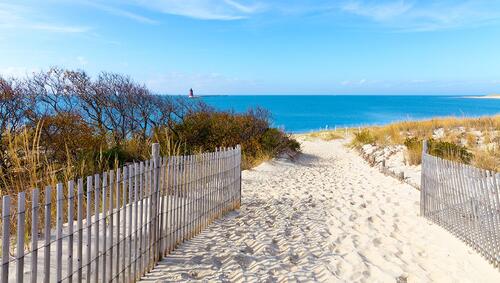
It’s appropriate that this small, yet naturally spectacular jewel of the Atlantic coast owes its name to a water source. In 1610, English explorer Samuel Argall was sailing from Virginia when a storm blew him off course and into modern day Cape Henlopen. After his arrival, Argall would go on to pay tribute to his governor, Thomas West, Lord De La Warr, the first governor of the colony of Virginia, by naming the waterway Delaware Bay. The state takes its name from both that bay and the Delaware River.
Florida
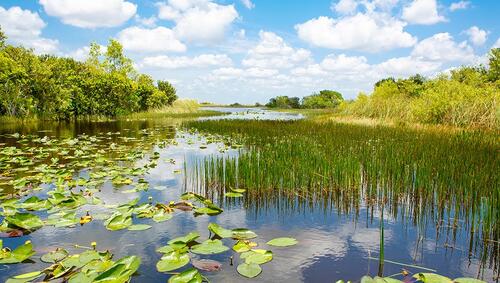
The Sunshine State is justly named in part after the bright and colorful plant life that can be found throughout the Florida peninsula. In April 1513, famous Spanish explorer Juan Ponce de León made his first European expedition to Florida, landing near what is now St. Augustine (America’s oldest city). It’s believed that the region’s spectacular plant life and the fact that the date was very close to Easter (or Pascua in Spanish) inspired the name Pascua Florida after one of Spain’s celebrations of the religious holiday, the Feast of Flowers. Every year, on April 2, Florida celebrates de León’s discovery with its official state day, Pascua Florida Day. You don’t need to wait until then to experience Florida’s beauty, however, as its stunning flora and unique natural sites like the Everglades can be enjoyed year round.
Georgia
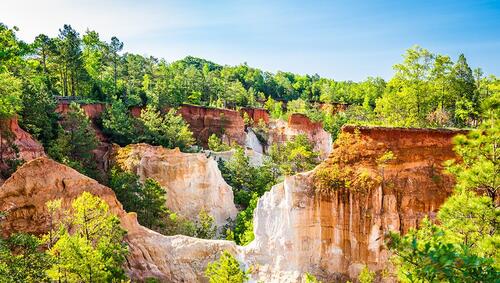
Despite America’s quest for independence from the British, the influence of English royalty can still be felt stateside, as evidenced by Georgia’s name. British philanthropist James Oglethorpe sought to create a U.S. colony where the debt-ridden people of England could get back on their feet and take ownership over their lives. During these efforts, he named the state after King George II for the king’s role in granting the charter that made his vision possible. Though Oglethorpe’s social-reform brainchild didn’t pan out as he hoped, Georgia still blossomed into a state that perfectly encapsulates all that the American southeast has to offer, from its rich history to scenic beauty.
Hawaii
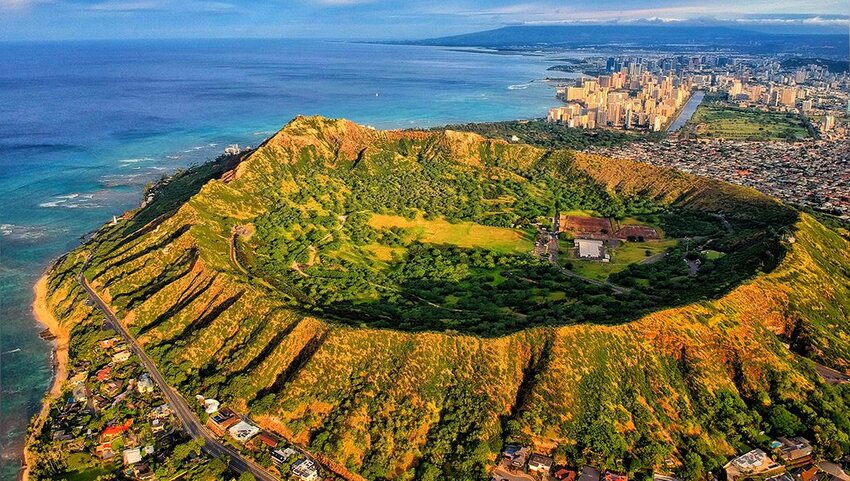
In the early 1810s, King Kamehameha I of Hawaii united the islands as the Kingdom of Hawaii, though the etymology behind the name is unclear. One theory is that British explorer Captain James Cook asked the Natives where he was when he landed in 1778, and wrote it down as "Owhyhee," which translates to “homeland.” Others suggest that the name comes from a blend of similar Proto-Polynesian words or that it is named after the Hawaiian legend Hawaiʻiloa, who is said to have settled the big island of Hawaii. All that being said, it’s hard to worry too much about which theory holds true when you can simply shut off your brain and relax on the sandy beaches of this Pacific paradise instead.
Idaho
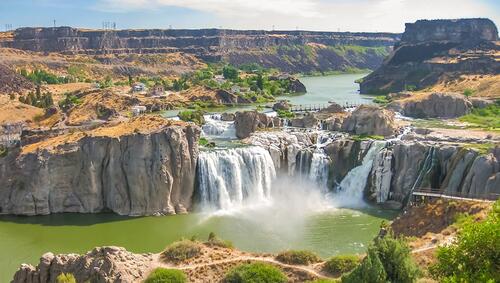
While Idaho is very real, its name was entirely made up to begin with. In 1860, the name Idaho was proposed for the territory by George Willing, a mining lobbyist who claimed it was a Native American word meaning “gem of the mountains.” It turned out that Willing had actually made the name up; Congress found out about the fraud and rejected the name, instead naming it Colorado. But a few years later, in 1863, after the naming hoax fiasco had been forgotten, the mining territory was officially named Idaho after all. The story really makes you wonder how many place names we can owe to a curious imagination.
Illinois

Spanning nearly 400-miles North to South, Illinois is home to a wide array of climates and cultures that make the state fascinating to learn about, but when it comes to its name, there’s a simple explanation. Illinois is a French pronunciation of the Illiniwek Native American tribe that French explorers Louis Jolliet and Jacques Marquette encountered upon arriving in 1673. The explorers believed the word to mean “the men,” but more recent studies of the language indicate it could mean "he speaks in the ordinary way." In 1818, when the territory was made a state, Congress confirmed the name. Nowadays the word Illinois is synonymous with the state’s great residents who have gone on to achieve profound success in the worlds of politics, art, music, and more.
Indiana

The story behind why Indianans are called “Hoosiers” is a lot more uncertain than the state’s name as a whole. The name Indiana simply means “land of the Indians,” though how it got that name is a tumultuous story. After the French and Indian War, the state was owned by a Philadelphia trading company who named it after the Native Americans that originally had claim to the land. But a large portion of the land actually belonged to Virginia, and after years of legal dispute, Indiana was reabsorbed by the territory, no longer bearing an official name. It wasn’t until 1800, when Congress reassigned territory boundaries that the old name Indiana was restored, and this key region from America’s Heartland became what we know it as today.
Iowa
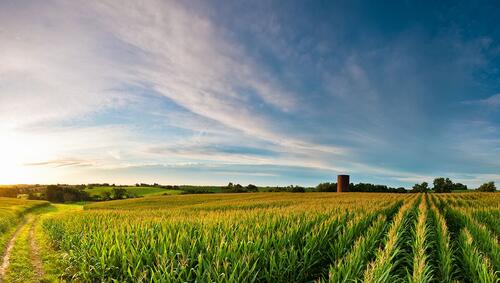
With endless fields of glorious corn, the lands of Iowa are majestic. In fact, the state’s name has been translated to mean “the beautiful land” by Iowa officials in the past, but the more likely explanation is that it came from the Ioway Native American tribe who originally inhabited the region. The tribe’s actual name, Ayuhwa, was given to the tribe by the Dakota Sioux and means “sleepy people,” though it was later adapted into Ioway by Europeans. Either way you look at it, the name Iowa is appropriate for such a visually appealing state whose residents live a calm and serene lifestyle.
Kansas

Kansas is derived from a Siouan language, and means “people of the south wind.” How appropriate, considering the winds that sweep through Kansas’ vast plains. The state got its name from the Native American Sioux tribe called the Kaws — also known as the Kansa — for whom French explorers also named the Kansas River. It’s believed that a French explorer once wrote the name on a map, and from that point on, the name Kansas was used for the region. Who knew that the simple stroke of a pen could have such a long-lasting impact?
Kentucky
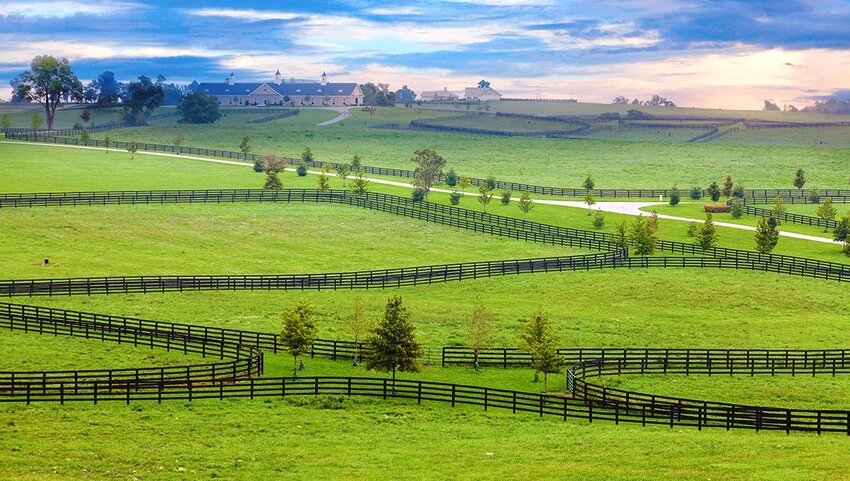
Knowing your namesake can be a point of pride, as it carries on the legacy of those who came before. But for Kentuckians, they may never know exactly where their state’s name came from. There are several prevailing theories, all primarily derived from Iroquois names. One includes a word for “prairie”; another, kentahten, means “land of tomorrow.” Other experts say it originated from an Algonquian term, kinathiki, which refers to a river bottom, or a Shawnee word meaning "at the head of a river.” Some records indicate that the Wyandot people’s Iroquois word for “plain” is in fact the true origin, and that it was first recorded in 1753. One thing’s certain: The Bluegrass State’s official name origins remain a mystery.
Louisiana
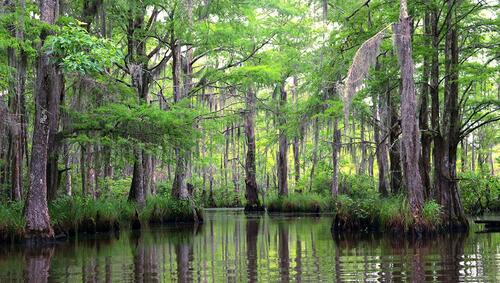
Take a trip down to the Bayou and you’ll see French influence everywhere you look. If you can’t make it down South, then just take one look at a map of the United States. There you’ll see the name Louisiana, which was named by French explorer René-Robert Cavelier Sieur de La Salle in 1682. He named Louisiana Le Louisiane in honor of the French King Louis XIV, and after the territory was divided up as part of the 1803 Louisiana Purchase, the state of Louisiana retained its name.
Maine

Similar to Louisiana, we sort of have the French to thank for the name Maine, at least according to the modern day state legislature. The first recorded use of the name Maine was in a 1622 land patent from King Charles calling the area “the Province or County of Mayne.” While some historians believe the name was used to differentiate it as the mainland, the Maine legislature adopted a resolution in 2001 stating that Maine’s name was taken from a nearby French province by the same name. It only took 379 years, but we can finally put that debate to rest.
Maryland
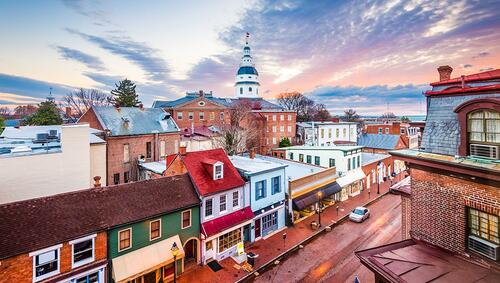
Women have played an undeniably important role in America’s history, yet only three states are named after female individuals. Maryland is one of them, named after English King Charles I’s wife, Queen Henrietta Maria. Some religious scholars, however, point out that Maryland’s founder George Calvert intended the colony to be a refuge for Catholics, and believe its name to be biblical in nature, named it after Mary, the mother of Jesus. No matter which way you cut it, Maryland’s name pays homage to a powerful and influential woman.
Massachusetts
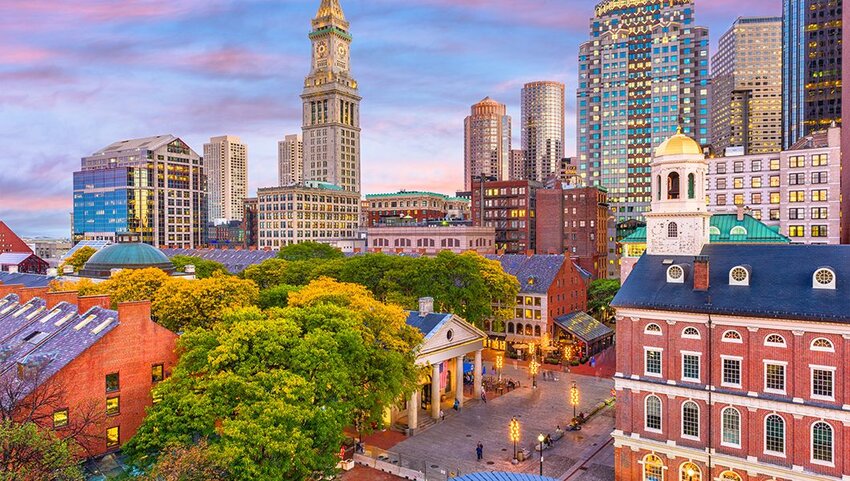
The Bay State takes its official name from the Massachusett tribe of Native Americans who lived south of present-day Boston; that Algonquian term roughly translates to “at the Great Hill.” How appropriate given the pivotal American Revolution battle that took place in Massachusetts at Bunker Hill. The name Massachusetts first appeared on record in explorer John Smith’s 1616 book, A Description of New England, and in that text he described the place as though its name had already been assigned by the Native inhabitants.
Michigan

Michigan not only looks like a glove, but its name fits like a glove. Explorer Jacques Marquette settled the region in 1668 and named it such as a French derivation of the Chippewa word michigama, meaning “great or large lake.” Whale Marquette may not have realized it at the time, Michigan is the only state that borders four of the five Great lakes, an impressive geographic achievement for this northern lacustrine paradise.
Minnesota
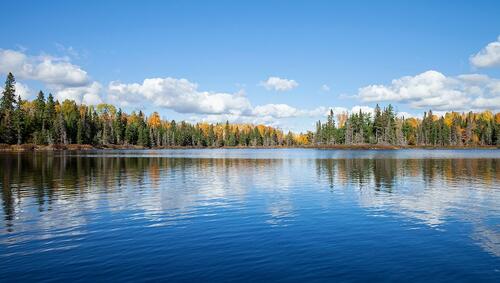
Though it’s nicknamed the “Land of 10,000 Lakes” — and that’s selling it short, given there are a staggering 11,842 lakes found throughout the state! — Minnesota actually takes its name from a river. That river was named by the Native American Dakota tribe who inhabited present-day Minnesota. Mni is the Dakota word for "water"; sota is largely said to mean “cloudy or muddy,” while others say it means “sky-tinted.” For a definitive answer, state historians point to the Treaty of 1851 in which the Dakota included the direct translation as “land where the water is so clear it reflects the sky,” which is a beautiful description of this lush northern territory.
Mississippi

Though its glistening waters weave through 10 states, the Mississippi River lent its name to just one. The river was named by the area’s Native Ojibwe tribe, who called the river misi sipi, which translates to "big river." It has also been said that the Native American communities, who long used the water for transportation and food, referred to it as the "Father of Waters." How apt, given that this namesake of Mississippi continues to provide in those ways even today.
Missouri
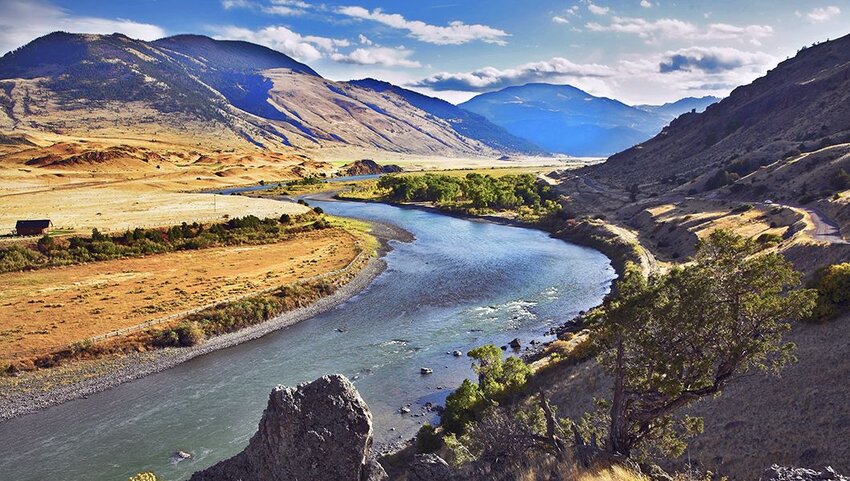
From one watery state to another, Missouri was also named after the river that bears its name. In 1673, a Native American Sioux tribe named the Missouris — a name given to them by the Fox tribe — called the area home. That name was initially thought to mean “muddy water,” but in later years it was determined to mean “people with big canoes.” You’d need big canoes to navigate the Missouri River, which believe it or not is actually the longest river in the United States! The river was named after these original inhabitants, which in turn gave its name to the future territory and eventual state.
Montana
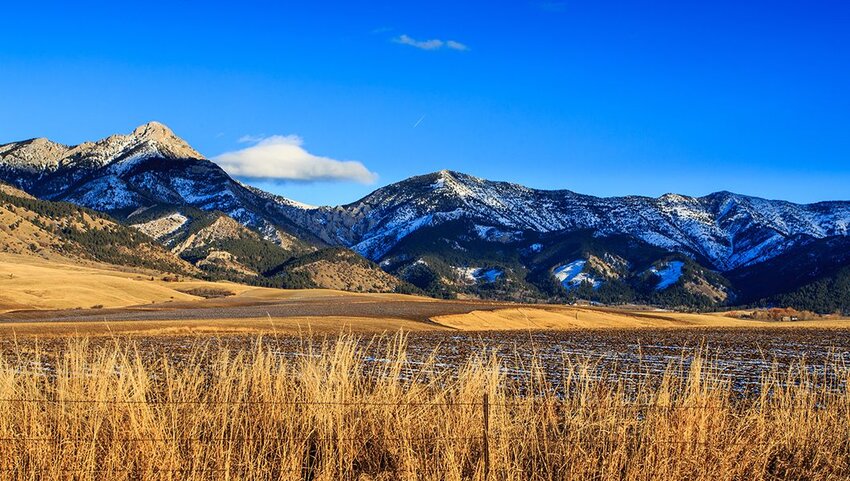
Though its elevation falls shy of the nearby Rocky Mountain region, the towering crags of Montana are undeniably abundant. Its rocky terrain is what inspired the name Montana, which is Latin for “mountainous.” Montana was first proposed as a name in 1864, when the Dakota territory was split into smaller portions, though the mountains have loomed large over the state for tens of millions of years prior to that.
Nebraska
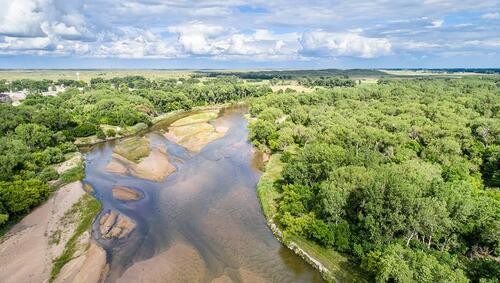
Like many states throughout the Great Plains, the name Nebraska comes from a Native American term. In this case the word nebrathka comes from the Otoe people, and means “flat water,” a reference to the region’s Platte River. Nebraska likely owes its modern name to American explorer and politician John C. Frémont, who used the river’s Native name in a report to the Secretary of War. Fear not, though, there’s no warring with the state’s borders. Nebraska is a peaceful place nestled perfectly in the center of this great nation we call home.
Nevada
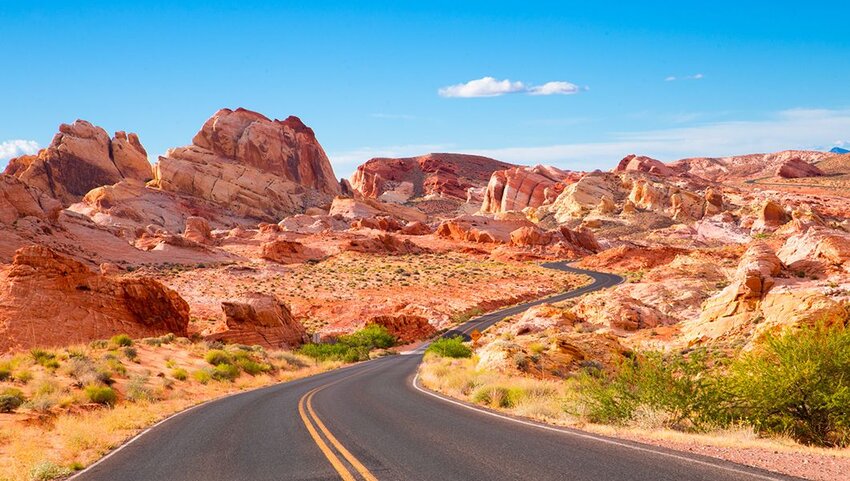
Nevada’s name actually comes from a mountain range primarily located in nearby California. The Sierra Nevada mountains were named such by Spanish explorers who discovered the area in awe during the 1770s, and came upon the snow-covered peaks. Sierra is Spanish for “mountain range,” and nevada means “snowfall.” Nevada wouldn’t be comprehensively explored until the 1820s, at which point the groundwork was laid for the modern gambling and entertainment mecca we know it as today.
New Hampshire

There’s no place like home. This mantra is believed by many, including a settler named John Mason. In 1623, the land that would eventually become the New England state of New Hampshire was granted to Mason, and in 1629, he named it after his home, Hampshire county in England. Though Mason died in 1635 before ever voyaging over to live in the new province, his indelible impact on the Granite State remains.
New Jersey
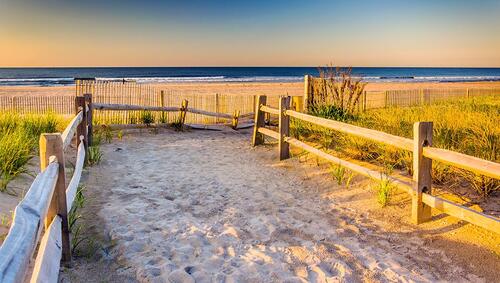
The name New Jersey is the result of a breakup, but not the romantic kind. In 1664, when the British seized the colony of New Netherland from the Dutch, the land was divided in half, with the east side granted to English statesman George Carteret. He had once served as governor of the Isle of Jersey, an island in the English Channel, and named the colony after it. Given its namesake, it only makes sense that New Jersey also borders the waters of the Atlantic, albeit many thousands of miles away.
New Mexico
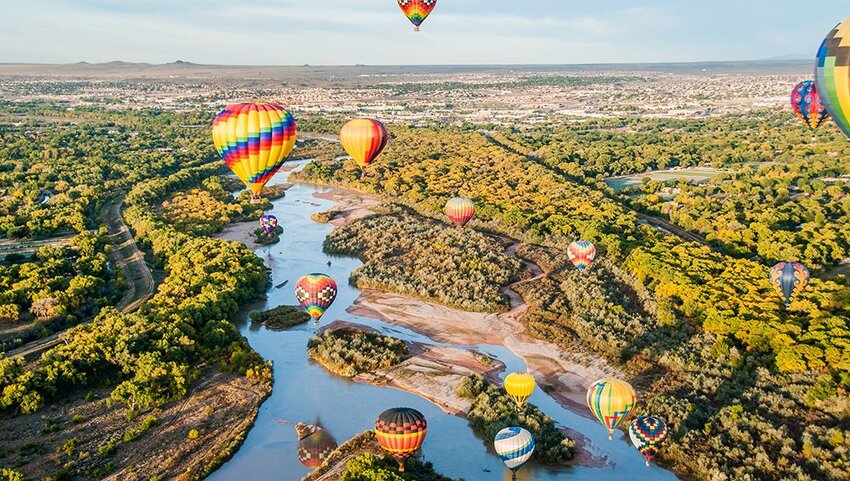
New Mexico was obviously named after the modern day country it borders, right? Wrong! You’d be surprised to learn that New Mexico was settled long before the country of Mexico was even named. In the 1500s, Spanish settlers referred to the upper area of the Rio Grande as Nuevo México, after the Aztec Valley of Mexico. The name comes from the Nahuatl word mexihco, and while the exact meaning is unclear, it seems most likely that the Aztecs named themselves after the tribal god of sun and war Huitzilopochtli, who was also referred to as Mēxihtli. So the next time someone ponders which came first, Mexico or New Mexico, keep this bit of trivia handy to wow them.
New York
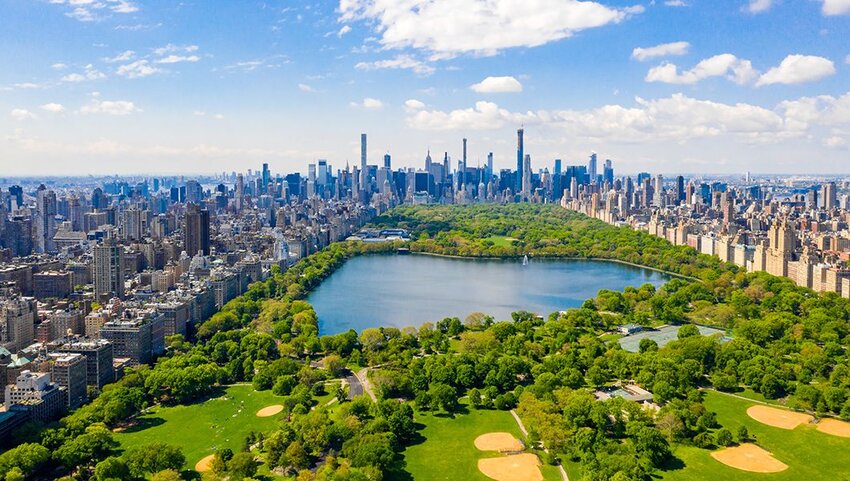
For a brief time in the 1600s, the city nicknamed the Big Apple was named after an entirely different fruit. In 1664, the British took power of the region of New Amsterdam and renamed it New York after King Charles I’s son, the Duke of York. However, for a short time, the city was actually called New Orange. In 1673, the Dutch regained control of the state and named it after the Dutch Prince of Orange. The following year, however, the British repossessed the region and renamed it New York for good, which later gave its name to the entire state. Yes, it’s hard to imagine Frank Sinatra singing “New Orange, New Orange,” but for a brief moment in history that was almost a reality.
North Carolina
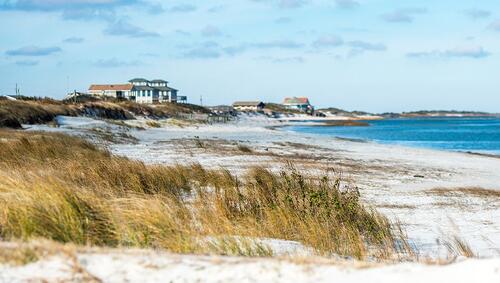
Naming a state after yourself is quite the power move, but that’s exactly what happened in 1629. King Charles I of England decided to name a new province Carolina (although it also appeared as “Carolana” in the charter), which is derived from Carolus, the Latin form of his name. Ah, to be king. In 1663, King Charles II granted a new charter for the same territory to the Lords Proprietors, who in 1710, appointed a separate governor to the northern part of the region. In 1729, the Carolina colony was officially divided in two, making Charles the namesake for double the amount of states he initially intended.
North Dakota
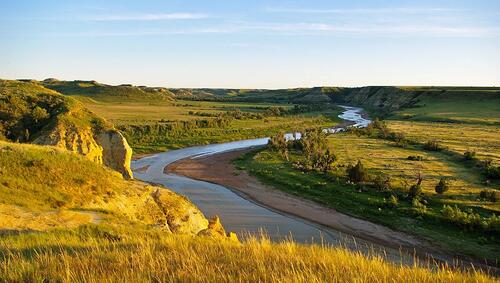
Much like the Carolinas, the Dakotas were once a singular, larger territory before being split into separate states in 1889. The name Dakota was taken from that of the Native American Dakotas, a Sioux tribe who originally inhabited the region; the word means “friend,” though is also often translated as “allies.” Will the region be divided even further leading to an East and West Dakota someday? Probably not, but anything is possible.
Ohio
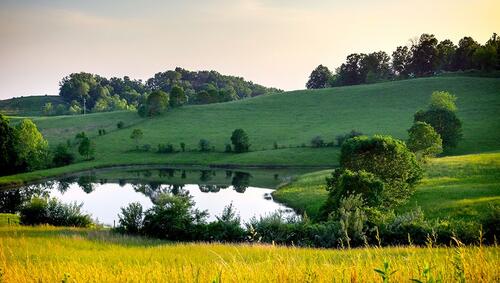
You can’t find any U.S. state names shorter than Ohio, but it was named after an even shorter Iroquoian word: O-Y-O, meaning “great river.” The Seneca Native Americans settled along what is now the Ohio River in the 1650s, and though the region was briefly named La Belle Riviere by French explorers in the late 1600s, the English restored its Native Ohio name when they took control in the mid-1700s.
Oklahoma
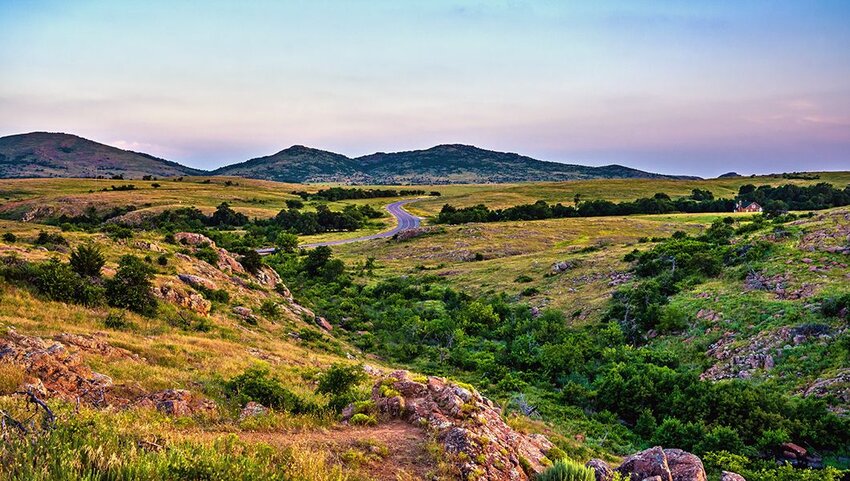
No, it’s not named after a frying pan, though Oklahoma’s shape certainly resembles ones. The first recorded use of the name Oklahoma actually came from Spanish explorer Francisco Vázquez de Coronado in 1541, and is based on the Choctaw words okla and humma, which mean “people” and “red,” and were used by the Choctaw to describe their people. In 1866, it was Allen Wright, then Chief of the Choctaw Nation, who suggested the name for the territory during treaty negotiations.
Oregon
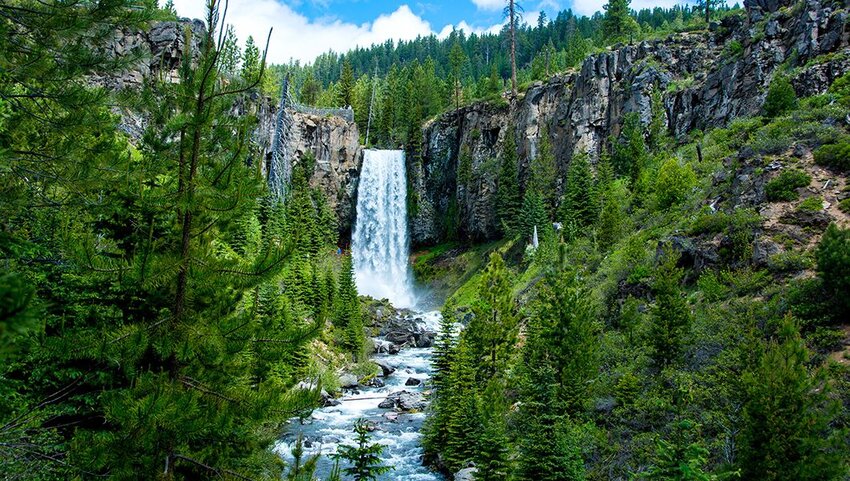
The story behind Oregon’s name is as murky as the state’s muddy banks along the Pacific Ocean. The first written record of the name appeared in 1765 by English army officer Major Robert Rogers, who stated that a local river was called Ouragon by Native Americans. Other theories were once popular enough to be printed in school textbooks, including that the name had Spanish roots and was adapted either from oregano, or orejon, a word meaning “big ears.” Though we may never be sure of Oregon’s true namesake, it’s certain that Oregon boasts an incredible natural beauty unique to the Pacific Northwest region.
Pennsylvania
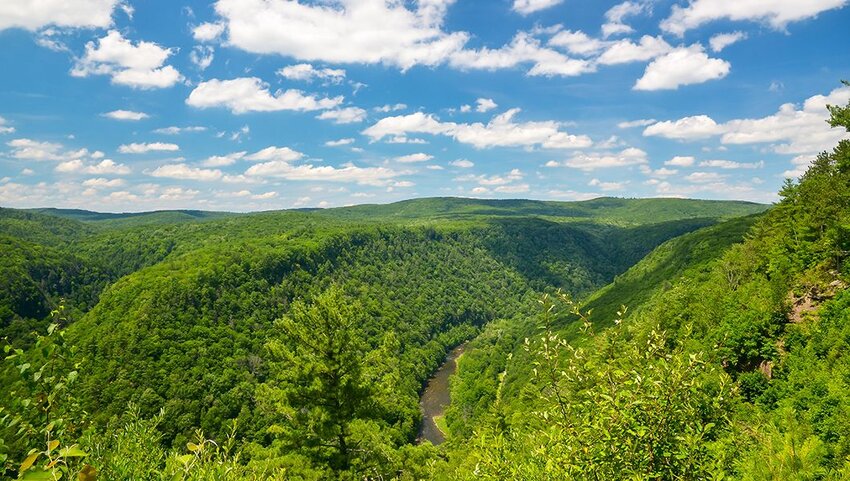
While Pennsylvania played a key role in helping to achieve American independence, its name has less to do with its political history and more with the state’s lush greenery. The Province of Pennsylvania — a name meaning “Penn’s Woods” — was inspired by the surname of its founder, William Penn, and also by the new province's forests, sylva (or “forest trees”). Penn envisioned a “a green country town” that encouraged religious freedom, which in turn led to Pennsylvania becoming one of the most culturally diverse among the 13 original colonies.
Rhode Island

You’ll have to forgive early explorers for assuming Rhode Island was an island. The New England state’s official stance on the origin of its name is that Dutch explorer Adriaen Block, on his 1614 expedition, called it "Roodt Eylandt” ("red island”) after seeing the red clay that lined the shore. One other popular theory however, is that explorer Giovanni da Verrazzano anchored near present-day Providence and compared the region to the Greek island of Rhodes. Though it’s not an island, Rhode Island still offers incredible oceanside views of the Atlantic that have earned it the very appropriate nickname, the Ocean State.
South Carolina
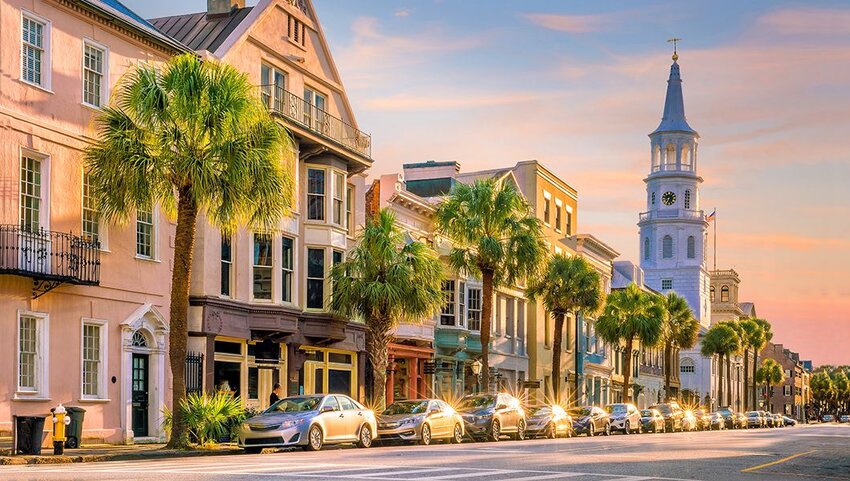
It’s no surprise that South Carolina shares an origin story with North Carolina, as described above. Despite this, South Carolina possesses a unique identity and southern charm that differentiate it from its neighbor to the North.
South Dakota
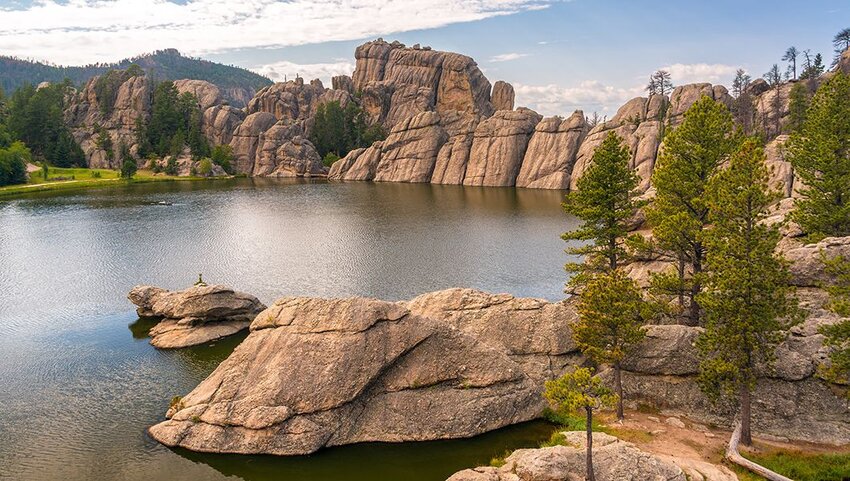
Once again, there’s no unique origin story for South Dakota, as it shares that history with North Dakota. But what makes South Dakota particularly stunning compared to its northern neighbor are South Dakota’s Black Hills and Badlands that make it a must-visit site for nature lovers.
Tennessee

It’s an unfortunate truth that sometimes details get lost in the annals of history. While that’s the case with regards to Tennessee’s naming origins, one agreed-upon fact is that Spanish explorer Juan Pardo was the first to record the name in 1567. He and his crew are believed to have traveled through a Cherokee village called Tanasqui, or, potentially Tanasi. The meanings of those words are not known, but have been theorized to be derivations of "winding river" and "river of the great bend." With both the Tennessee and Mississippi Rivers winding through its borders, it’s very possible if not likely that they could have inspired the state’s name.
Texas
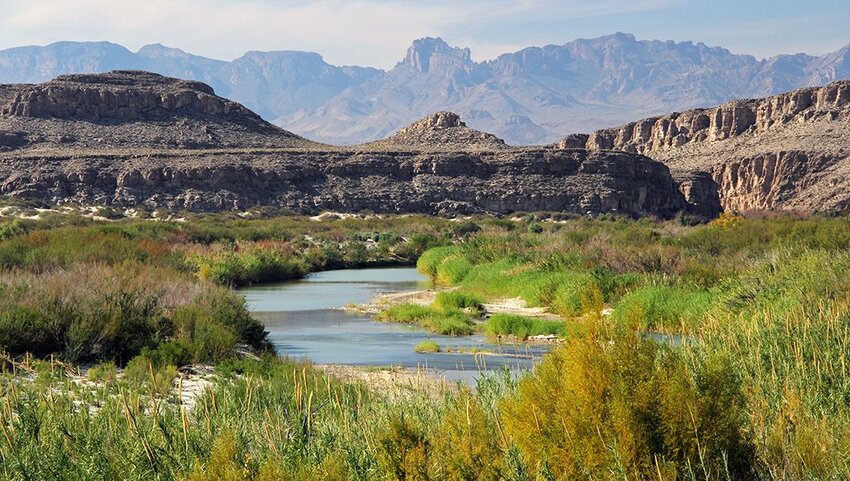
Texans have that sweet southern charm, so it’s fitting that its name translates to “friends or allies.” Spanish explorers encountered the Native American Caddo tribe in present-day Texas in the 1540s, and are believed to have interpreted their word teyshas as the tribe name, recording it as Teyas or Tejas. While the errors were corrected and the usage stopped over time, the name eventually lived on. “Friendship” has even been the Texas state motto since 1930, so if you don’t have a pal from Texas already then be sure to find yourself one.
Utah
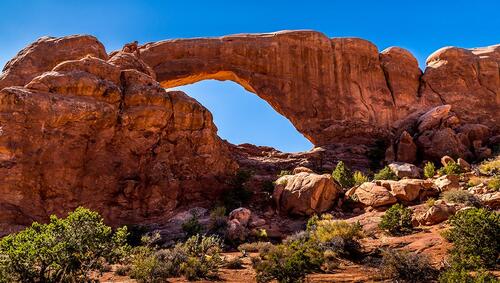
From its crystal clear Great Salt Lake to the mountainous peaks that make the state distinct, Utah has a natural beauty as rich as its deep history. When Spanish settlers arrived in the area in the late 1500s, they encountered the Native American Ute tribe, from which the state takes its name. The meaning of this tribe’s name is “people of the mountains”; it’s also believed that this name could potentially have come from the Apache word for the tribe, yuttahih, which roughly translates to "those that are higher up.” Despite the association with the state’s elevation, in the Ute tribe’s language, their own name actually means “land of the sun.”
Vermont
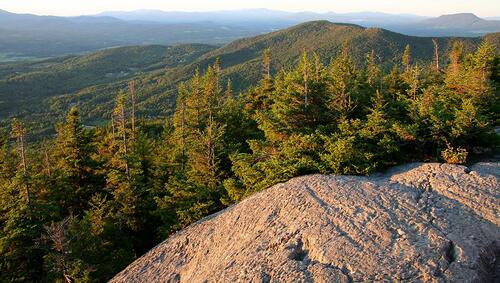
While many of the names on this list date back to pre-American independence, Vermont’s name was first documented just one year after the country’s creation. The words vert and mont translate to “green mountain,” as the state is home to the glorious Green Mountain range. On April 11, 1777, Philadelphia doctor and revolutionary Thomas Young became the first to use the name Vermont in print, writing, ““To the Inhabitants of Vermont, a Free and Independent State.” Young is believed to be the originator of the name, which was likely as much a tribute to his friend Ethan Allen and his Green Mountain Boys militia as it was a description of the stunning scenery.
Virginia

Much like Maryland, yet another powerful and influential woman lends her name to the state of Virginia (and in turn, West Virginia, but we’ll get to that later). Virginia was named for Queen Elizabeth I of England, who was also known as the “Virgin Queen” for her reluctance to marry. In 1584, Elizabeth granted English explorer and soldier Walter Raleigh permission to start the colony, and he would go on to name the new land in her honor.
Washington
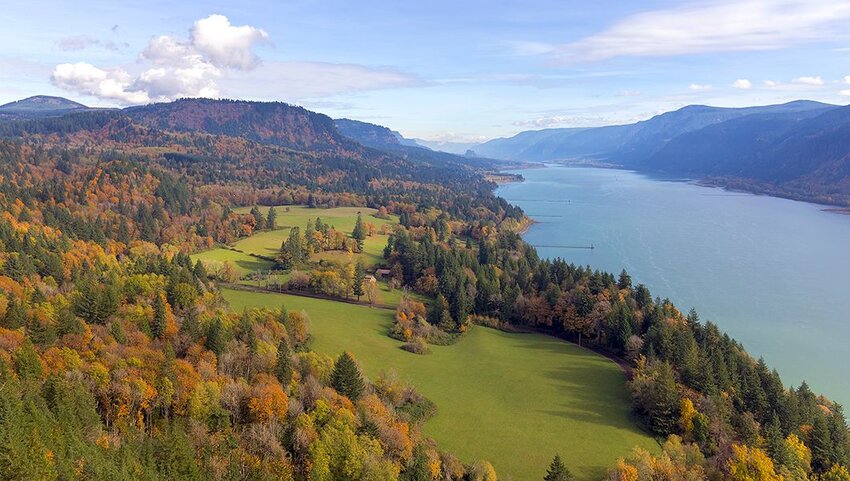
Few individuals have had a more prolific impact on our country’s history than the first U.S. President George Washington, so it’s only sensible to have named a state after him. The territory was initially going to be named Columbia, after the Columbia River, but Congress worried it might get confused with the national capital, the District of Columbia. Washington is the only U.S. state named after a president, though if there’s one man who deserves the honor, it’s George.
West Virginia
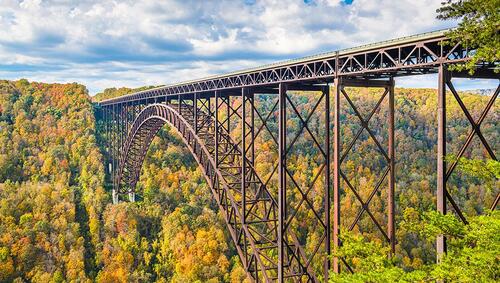
West Virginia retained the name of the state from which it separated (Virgina), meaning it is also named after Queen Elizabeth I and is the third and final (alphabetically) U.S. state named for a female individual. During the Civil War, when the State of Virginia withdrew from the Union in 1861 to join the Confederacy, the state’s western region — which had long felt alienated from the eastern region’s politics — refused to do so. In 1863, President Abraham Lincoln proclaimed West Virginia as its own state. This beautiful Appalachian state received its first national park in 2021, the New River Gorge.
Wisconsin
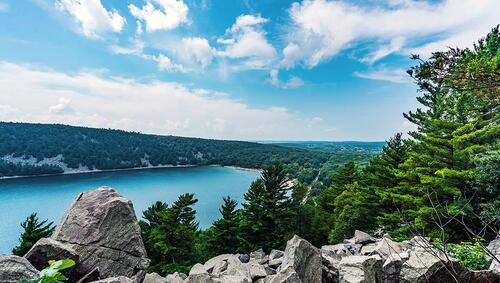
Doctors famously have bad handwriting, but in one historic case, so do explorers. In 1673, French explorer Jacques Marquette adapted the word Meskousing from the region’s Algonquin-speaking tribes to describe a river he had traveled. The word, written in cursive, was then misread as “Ouisconsin” by French explorers. It was written that way until 1830, when the U.S. House of Representatives first printed it as it sounds: Wisconsin.
Wyoming
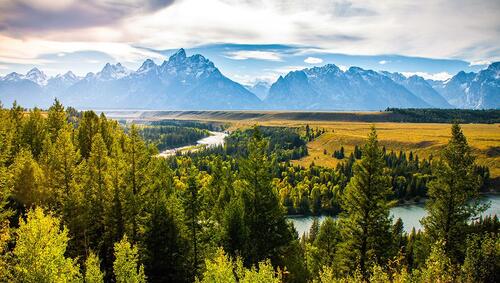
Last but not least we come to Wyoming. The name comes from the Native American Algonquian word mecheweamiing (meaning “at the big plains”), and was first used by the Lenape people as a name for their home region, Pennsylvania’s Wyoming Valley. In 1865, the name was suggested for the Wyoming territory. Though U.S. Representative James M. Ashley (who was born in the Wyoming Valley) later expressed regret upon learning of the new territory’s poor soil quality, the name stuck. Hopefully Ashley’s descendents don’t feel the same way, as Wyoming is home to some of the most awe-inspiring nature found anywhere in the U.S.A.





